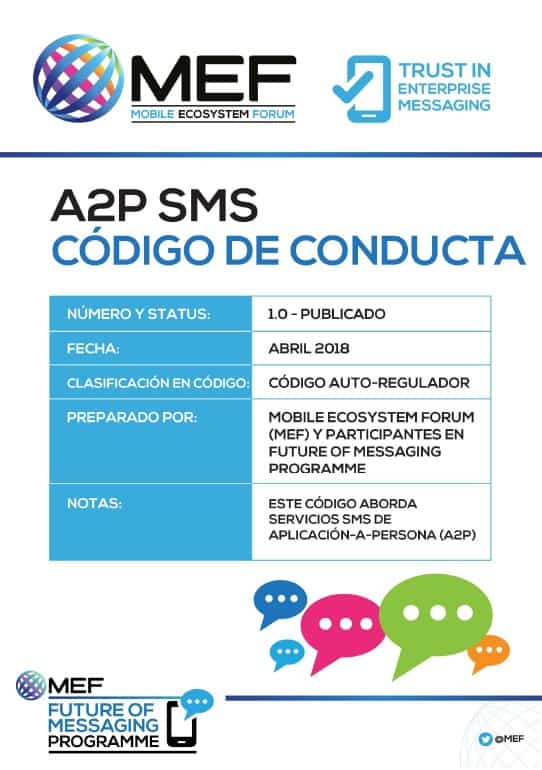MEF’s A2P SMS Code of Conduct helps drive self-regulation and best practice in business messaging. Here, MEF’s COO Joanne Lacey and Future of Messaging Programme lead speaks to Telefonica’s Head of Business Messaging for LatAm, Mitchell Cutmore about how Telefonica is using the Code and its potential impact in the region.
Key MNO fraud challenges in LATAM
At some point all our markets face a combination of SIM farms, grey routes and smishing as key fraud challenges. That said, many markets in Latin America offer unlimited SMS packages to remain competitive which are taken advantage of by SIM farms. Therefore, our main challenge is how to balance these offers with reasonable SIM Farm controls that protect our business and ensure customers aren’t being bombarded with fraud and spam.
Self-regulation as the way forward
Latin American MNOs have tried to tackle fraud in boom & boost cycles often triggering regulator intervention where they have judged MNOs being heavy handed when it comes to blocking traffic.
By working with MEF and aligning ourselves with best practices from across the ecosystem (aggregators, brands and other operators), we aim to implement a common-sense approach that strikes a balance between protecting customers and stopping SIM Farms in their tracks.
Why is Telefonica choosing to mandate MEF’s A2P SMS Code?
The cause and effect nature of the messaging ecosystem means any adjustment by an MNO impacts how aggregators can do their business. We’ve been recommending the Code to all our aggregators since it launched in 2018, but given low uptake, believe it`s clear MNOs must set the tone and rules of engagement going forward – making the Code an integral way how we do business together.
A shift in the conversation
We’re looking to trigger a positive chain reaction across the region mandating the Code in several key markets and encouraging other MNOs to follow suit. We don’t expect to lose aggregators as a result of mandating the code and think code signatures should be a useful means to demonstrate the quality of their routes when talking to brands. Above all, self-regulating with aggregators should provide the backdrop for a more constructive dialogue with regulators as to how MNOs can protect the A2P channel with their support.
What actions does the industry need to take?
It would be great to see the Code deliver greater customer and brand awareness about how business messaging works. On many occasions aggregators have asked for certification materials to help educate brands about the risks they take when working with SIM Farms and MEF’s Trust in Enterprise Messaging badge is the start. In the future, it’d be interesting to explore whether brands could also sign the Code – to put their customers at ease and demonstrate that their messaging is also up to the trusted industry standard. That way customers are clearer about which brands and messages to trust, which traffic to approach with caution – reinforcing the code’s value as a reliable source of guidance throughout the ecosystem.
MEF’s A2P SMS Code of Conduct
Developed by the participants of MEF’s Future of Messaging Programme that include enterprises MNOs, messaging companies and solution providers, the Code aims to tackle the 13 fraud types that the working group identified, defined and mapped in its Fraud Framework to understand impacts from financial, technical, legal and trust perspectives.
The A2P SMS Code of Conduct is available in English and Spanish.
Find out more







